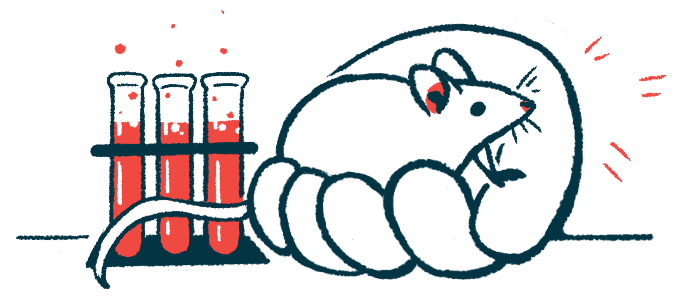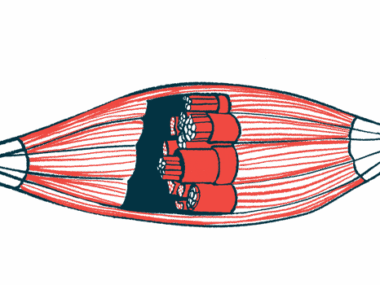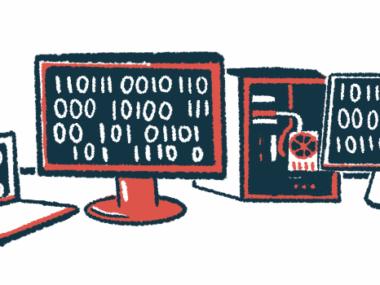New Pompe disease ERT clears glycogen from muscle, brain cells
In mouse study, it outperforms approved versions of therapy
Written by |

Scientists at Sanofi have developed a new type of enzyme replacement therapy (ERT) that can clear excess glycogen — the underlying cause of Pompe disease — from the cells in the brain and spinal cord, which are untouched by current ERTs.
That’s according to a mouse study, which also found that the new ERT outperformed two of Sanofi’s approved ERTs in clearing glycogen from skeletal muscle, or those attached to bones, tests showed.
The mouse study, “Novel transferrin receptor-mediated enzyme replacement therapy efficiently treats neurogenic and myogenic aspects of Pompe disease in mice,” was published in Molecular Therapy – Methods & Clinical Development.
ERT is the standard Pompe disease treatment
Acid alpha-glucosidase, or GAA, is an enzyme that breaks down glycogen into glucose, a sugar used to generate energy. In Pompe, GAA is either missing or dysfunctional, As a result, glycogen builds up and disrupts cellular function, particularly in muscle and nerve cells, ultimately giving rise to disease symptoms.
ERT is the standard Pompe treatment. It supplies patients with a lab-made source of the GAA enzyme, which helps clear excess glycogen from cells, thereby easing symptoms.
Despite improving muscle function, current versions of ERT can’t clear excess glycogen from nerve cells in the brain and spinal cord, referred to as the central nervous system, or CNS. That’s because they can’t cross the blood-brain barrier — a membrane that prevents potentially harmful substances in the bloodstream from reaching the brain. As a result, neurological disease is not treated by the approved ERTs.
To address this limitation, scientists at Sanofi, along with collaborators, have developed a new type of ERT that can deliver GAA across the blood-brain barrier by exploiting the transferrin receptor (TfR).
Transferrin is a protein that transports iron through the bloodstream to various tissues in the body. Iron is imported into cells when transferrin binds to the TfR, which is found on the surface of cells, including muscle cells and those that line the blood-brain barrier.
Now, the team has directly linked the GAA enzyme to an antibody that binds to TfR, mimicking transferrin. The result is that the modified ERT, dubbed anti-TfR-GAA, passes into both muscle cells and the CNS.
Researchers initially developed four versions of modified ERT
The researchers first developed four versions of anti-TfR-GAA, all of which could clear glycogen from the CNS of a Pompe mouse model modified to produce human TfR. In comparison, alglucosidase alfa, Sanofi’s approved ERT that’s sold as Lumizyme in the U.S., was unable to clear glycogen from these tissues.
The most effective anti-TfR-GAA reduced glycogen levels in the brain by about 68% compared with untreated controls. It also reduced glycogen in muscle tissues better than avalglucosidase alfa (77% vs. 34% in heart muscle and 61% vs. 19% in thigh muscle). Avalglucosidase alfa Sanofi’s next-generation ERT that’s sold as Nexviazyme. Alglucosidase alfa showed a slighter reduction in glycogen in these tissues.
Using clinically relevant doses, anti-TfR-GAA markedly reduced glycogen levels in the CNS compared with matching doses of avalglucosidase alfa. With anti-TfR-GAA, reduced glycogen levels were observed throughout the brain and were not limited to a specific region or cell type. In addition to the CNS, anti-TfR-GAA outperformed avalglucosidase alfa in clearing glycogen from skeletal muscle.
When mice received regular treatments, as Pompe patients do, anti-TfR-GAA reduced glycogen to normal levels in the CNS, and it lowered glycogen levels in all other tissues tested while avalglucosidase alfa did not.
These data demonstrate that CSF Hex4 may be a useful biomarker for evaluating CNS glycogen burden in patients with [Pompe disease].
Anti-TfR-GAA also significantly reduced the levels of two markers for inflammation in CNS tissue. Similarly, the treatment reduced the levels of Hex4, a marker of glycogen storage, in the cerebrospinal fluid (CSF), which surrounds the brain and spinal cord.
“These data demonstrate that CSF Hex4 may be a useful biomarker for evaluating CNS glycogen burden in patients with [Pompe disease],” the team noted.
Finally, the researchers tested whether a noninvasive MRI imaging technique, called Glyco-CEST/NOE, could be used to assess glycogen levels in the CNS of Pompe patients. MRI signals for glycogen were elevated in untreated Pompe mice, but dropped following two doses of anti-TfR-GAA and continued to decline after four doses.
Biochemical analysis of treated and untreated Pompe mouse brains confirmed the MRI findings, demonstrating that “CNS glycogen levels can be measured using a non-invasive … imaging technique that could be adapted for clinical use,” the researchers wrote.
“Anti-TfR-GAA has the potential to treat both [nerve and muscle] disease, restoring and maintaining respiratory and motor function while also potentially providing clinically meaningful benefits to patients with CNS manifestations due to glycogen burden,” the scientists wrote. “Moreover, the success of leveraging TfR to deliver cargo to both the CNS and muscles expands the utility of this approach for treating other neuromuscular diseases via delivery of other types of cargo.”







